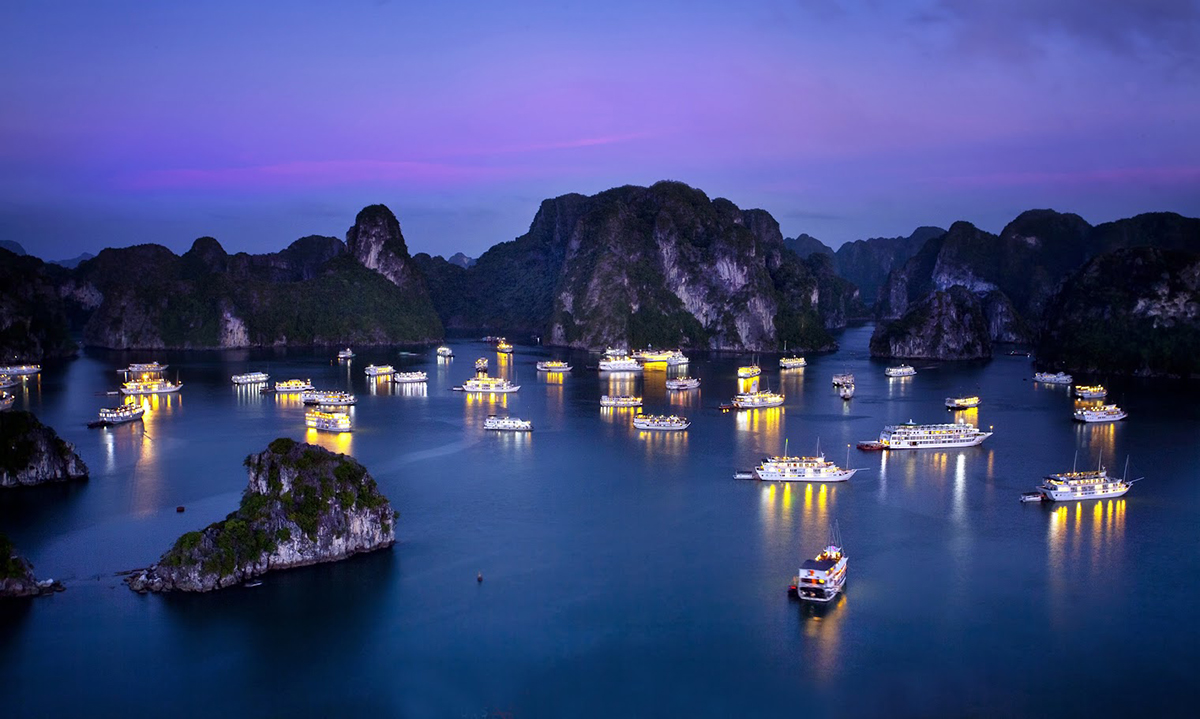Learning about Ha Long Bay at greater length will give you a more holistic view of the destination and help you appreciate what you are seeing even more. Ha Long In Depth is also a place where you can explore the different option for touring the Bay: Adventure tourism, community based tourism and eco-tourism.
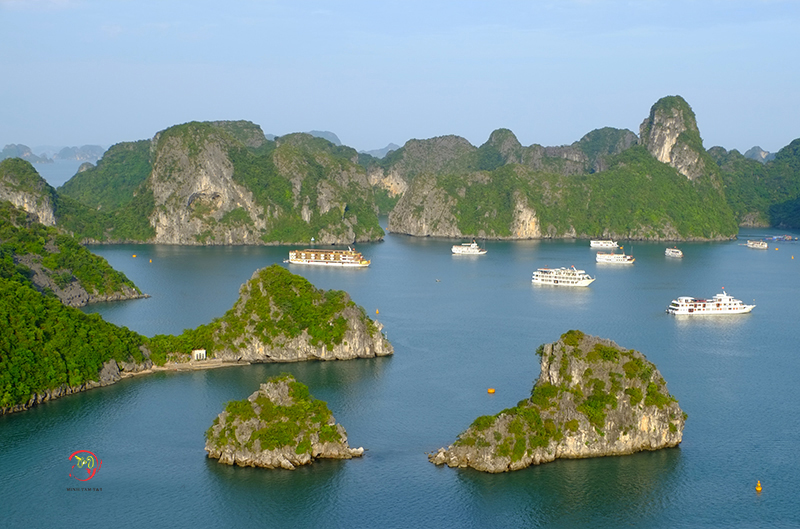
The geological formation of Ha Long Bay
Administrative Division: Ha Long City, Quang Ninh Province
Area: 1553km2 and 120km coastline; covering over 3000 islets with water body
Population: about 1600 people living in floating fishing villages: Cua Van, Ba Hang, Cong Tau & Vong Vieng
Recognition:
– 1962: ‘Renowned National Landscape Monument’ by Vietnam Tourism Authority.
– 1994: UNESCO World Heritage Site by UNESCO
– 2012: New 7 Wonders by New 7 Wonders Foundation
– Member of Club of the Most Beautiful Bays of the World
The geological formation of Ha Long Bay
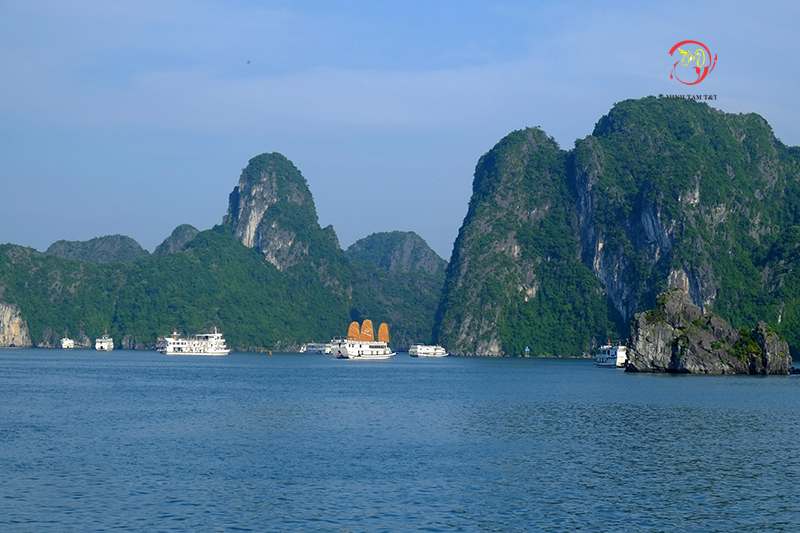
Mentioning about Ha Long, ones would not hesitate to use the most beautiful words to describe the breathtaking natural scenery of the Bay. Besides the unique natural scenery, the bay has a great geological value.
The long-lasting history of geological formation of Ha Long Bay is known with more than 500 million years of changes between mountain growing, marine degradation, mountain sinking, and encroaching sea. Ha Long used to be a very deep sea during Odovic – Silua era, shallow sea during Cacbon – Pecmi era, and coastal area during Plaogen – Neogen era. Not only that, contributing on the present natural wonder Ha Long Bay was the result of a magnificent ancient marine limestone accumulation, which reached above 1,000 meters 340-240 million years ago, and the Karst erosion period of more than 20 million years.
Ha Long Bay was also an excellent example for Karst period of developing and dominating under the humid tropical weather of Vietnam. The bay went through the Karst evolution in million years, due to the combination of geological and climatic factors like thick limestone in association with tropical climate, and finally the slow tectonic uplift in general.
In addition, the permanent erosion process of rain and tides from the sea resulted into special geological formation of the most unique valleys, Karst lakes and towers in the world, and a complicated system of primitive caves. This system is separated into three main forms: developing vertically, for example the highest and most ancient caves that can be seen now; developing horizontally, which resulted into middle-age caves; and the final form is composed due to the cutting and erosion of water streams, which provides priceless biological, geological and oceanographic values.
Thanks to the early development of geological system, Ha Long Bay is preferred by the Mother Nature with a stable foundation to develop other values like biology, culture, archeology, and history. Amongst which, biodiversity is the strength, as well as an attractive factor to draw international visitors to come and explore. Ha Long is a giant conservation zone of floral kind, especially rarest species in the world. The Bay is also a base of a variety of the tropical ecosystem such as mangrove ecosystem, reef ecosystem, and tùng áng ecosystem.
Ha Long bay culture
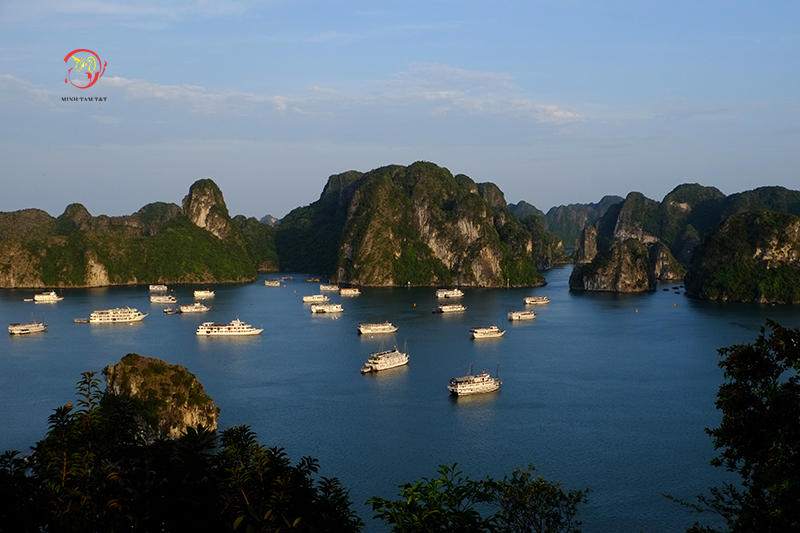
Ha Long Bay is honored to be one of the cradle of mankind with several ancient civilizations developed in the land dated back 5,000 – 4,000 years ago, which contribute another precious value of the bay.
However, the Ha Long Culture has only been discovered and examined since French colonial time, around 65 years ago with 27 vestiges spreading through Ha Long Bay on small islets, mountains and hills bordering the sea, and a complicated system of primitive caves.
Achievements of restless investigations from both Vietnamese and international scientists are a variety of rock tools, most of which were created exquisitely with techniques like sharpening and polished sawing.
Thanks to this, ancient Ha Long citizens soon made unique tools and weapons for farming and hunting like felling axe, splitting axe, broad axe, hand axe, and hatchet. Amongst those, hand axes played critical part in the life of ancient Ha Long people, which is also considered the symbol of this civilization. In addition, “Ha Long Seal” (a kind of parallel slotted grater) also contributes on the trait of Ha Long culture.
Another noticeable feature of Ha Long culture lies in ceramic products, which are very diverse but unique and were made mainly on ceramic turntable. Ceramic products were the pride of the local people that helped Ha Long culture differentiates itself from other cultures during the same period of time.
In summary, based on all artifacts collected so far, Ha Long is said to possess developed culture with a completed kit of production tools for harvesting and hunting, and even agricultural activities and fishing activities, not to mention handicraft activities like ceramic producing, jewelry producing, or spinning weaving, etc.
Ha Long – A site for archaeologists
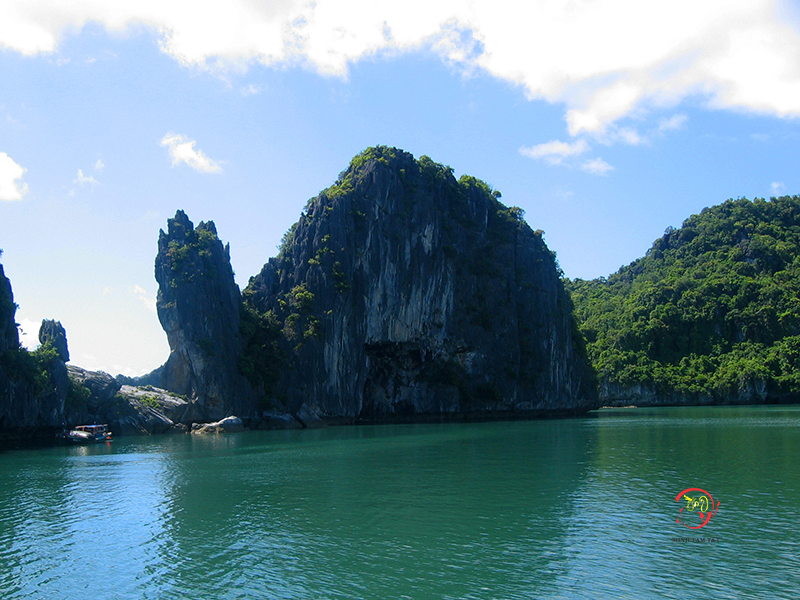
In 1937, the accidental discovery of the first artifact by a glass craftsman in Ngoc Vung Island in Ha Long is later recognized as one of the cradles of mankind.
During that time, Vietnam was still a French colony; the discovery made archaeological enthusiasts came to Vietnam to exploring the ancient human civilization. From that time, a lot of discoveries has been found, in the Ha Long coastal area, such as thousands of antiques like stone tools, ceramic receptacles, stone jewelry and human’s bones, all dated back to Neolithic age.
After the liberation of Northern Vietnam in 1945, Vietnamese and Soviet archaeologists started working together. In 1960, an exploration crew found pieces of wherry of the ancient apes, and a lot of copper arrows, which are belong to Hung Kings period (from 2879 to 258 BC). The results from all of searches were clear evidences of an ancient civilization in Ha Long Bay dated back 3,500-5,000 years ago.
From 1960 until now, archaeologists have expanded their research to 40 sites in Ha Long and found strong evidences to prove that an even older civilization existed in Ha Long Bay area, not just 3-5 millenniums ago, but back to 18,000 – 7,000 years BC. Ancient people used to live scattered in the area of Ha Long Bay, Bai Tu Long Bay, Me Cung Cave, Tien Ong Cave, and Thien Long Cave. Collected artifacts such as eatable sea snails and rude working tools proved that people here lived mainly on fishing, collecting sea-snails and oysters, digging roots and bulbs. The most recent discovering was in 2006, when important antiques of Trong Dong Civilizations were found, including cavemen’s bones, stone axe, ceramic pieces, mollusk deposits used to make foods and jewelry.
Archaeological researches have been conducted restlessly in Ha Long Bay to decipher all the found artifacts from the ancient civilizations existed in Ha Long Bay. From all the evidences, archaeologists say that Ha Long Bay is one of many cradles of humankind.
Ecotourism has become a new touristic trend all over the world. This form of tourism does not only bring exciting and unique experiences of wonderful beauty of the nature to tourists, but also promotes tourists awareness about environment protection and sustainable development. Ecotourism benefits the local economic growth as well as cultivates respect for different cultures and for human rights. With many delicate, pristine, and fairly undisturbed natural areas, Ha Long Bay is a perfect place to develop ecotourism. However, Ha Long Bay ecotourism is still immature and lack of options.
In Ha Long Bay, ecotourism is offered to tourists by luxurious cruises mostly, via a program from local administration named “The eco tag”. According to this program, whichever cruise is qualified in term of equipment, capability, and experience (which is assessed by tourism administrators), is titled “Green Sails”. This title allows the cruise to conduct ecotourism activities in Ha Long Bay. However, ecotourism programs by these cruises are quite simple, with only few options such as guiding tourists to rare coral areas, primitive sea region, and exploring mysterious caves under rocky islands in this bay. These activities are often associated with water sports, including kayaking and diving.
Ha Long Bay is not one of the Seven Natural Wonders of the World for nothing. The gorgeous and unspoiled beauty is just one of its suitable features for ecotourism. It is promising to develop ecotourism with Ha Long Bay magnificent landscape with two thousand rocky islands and emerald color ocean. It is also a crime to visit Ha Long Bay without a venture to any grottoes or caves. A trip to Ha Long Bay would remain in any tourist’s memory as a wonderful journey to the state of nature.
Ecotourism in Halong Bay
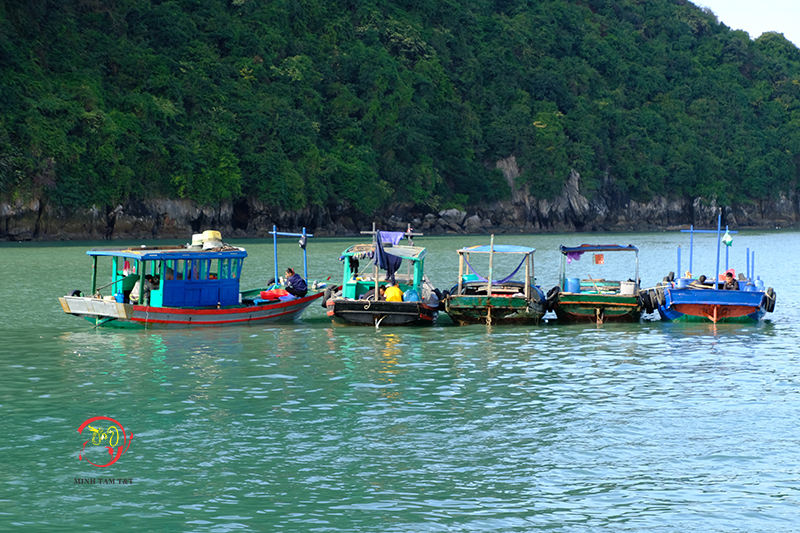
Ecotourism has become a new touristic trend all over the world. This form of tourism does not only bring exciting and unique experiences of wonderful beauty of the nature to tourists, but also promotes tourists awareness about environment protection and sustainable development. Ecotourism benefits the local economic growth as well as cultivates respect for different cultures and for human rights. With many delicate, pristine, and fairly undisturbed natural areas, Halong Bay is a perfect place to develop ecotourism. However, Halong Bay ecotourism is still immature and lack of options.
In Halong Bay, ecotourism is offered to tourists by luxurious cruises mostly, via a program from local administration named “The eco tag”. According to this program, whichever cruise is qualified in term of equipment, capability, and experience (which is assessed by tourism administrators), is titled “Green Sails”. This title allows the cruise to conduct ecotourism activities in Halong Bay. However, ecotourism programs by these cruises are quite simple, with only few options such as guiding tourists to rare coral areas, primitive sea region, and exploring mysterious caves under rocky islands in this bay. These activities are often associated with water sports, including kayaking and diving.
Halong Bay is not one of the Seven Natural Wonders of the World for nothing. The gorgeous and unspoiled beauty is just one of its suitable features for ecotourism. It is promising to develop ecotourism with Halong Bay magnificent landscape with two thousand rocky islands and emerald color ocean. It is also a crime to visit Halong Bay without a venture to any grottoes or caves. A trip to Halong Bay would remain in any tourist’s memory as a wonderful journey to the state of nature.
Adventure tourism in Halong
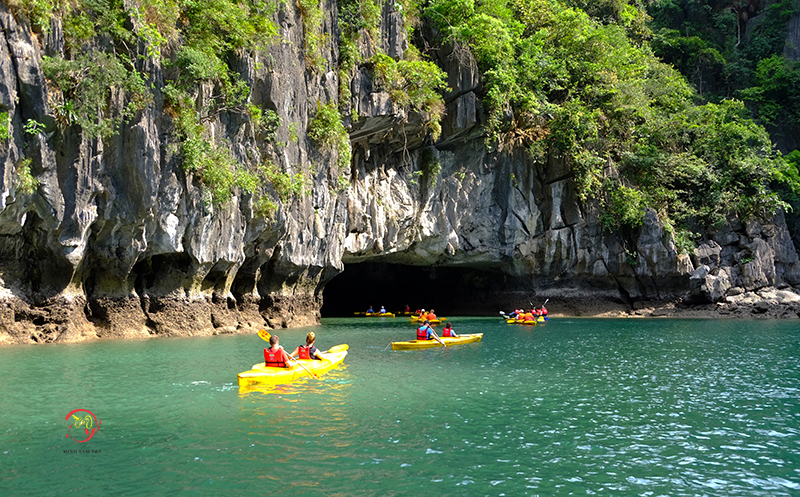
In Vietnam, adventure tourism is not a popular concept. Those who want an exotic adventure should not miss the chance to embark themselves into Vietnamese tropical forests, caves, or other natural areas. Halong bay is an excellent choice with two thousand islands and countless caves.
The most popular activity in Halong City is kayaking and is generally provided by luxurious cruises in the bay. This might not be as mysterious and dangerous as real adventure trips, but you can still have plenty of fun. While some just want to kayak around their cruise, others prefer to explore deep caves in the rock islands.
Talking about rock island, Halong Bay is known for being a perfect place for rock climbing. However, there is no official agency in this bay that possesses the adequate ability and equipment to conduct this activity just yet. Tourists have to prepare their own equipments and do a research about Halong Bay rock climbing, a Vietnamese rock climbing club.
The legend of Halong Bay

Although the name Halong Bay has made it to the world thanks to its world heritage title and one of the new Seven Wonders of the World, not many people know about the mystery beneath that name. In ancient Vietnamese, Halong literally means “descending dragon” and it is originated from a legend of this ancient land.
The legend says that during the old time when the country was newly formed, Vietnamese had to fight against fierce invaders coming from the North through the sea. Feeling sorry for the country, The Jade Emperor sent the Mother Dragon and her children descending on earth to help ancient Vietnamese people defend the country.
While the mighty enemies were attacking the main land, The Mother Dragon and her children suddenly appeared and incinerated the enemies with their divine fire and giant emeralds. The emeralds from the dragon’s mouth were scattered around the battlefield on the sea and formed an invincible defensive wall that left enemy battleship fleet sinking. Thanks to the dragons, the Northern invaders were finally swept away and the peace finally came back the South East Asian country once again. After thousands of years, the wall of emerald turned into island and islets of different sizes and shapes.
After the battle, The Mother Dragon and her children didn’t come back to the heaven, but stayed in the mortal world and turned into human form and help people planting, cropping, raising cattle, reclaiming, and expanding the country.
To remember the help of Mother Dragon and her children, the people live there from generation to generation name the bay where the Mother Dragon descended “Ha Long or Halong” and the bay where her children descended “Bai Tu Long”, which means “Thanks to the Dragon’s children”. This legend is also a part of the general belief that Vietnamese people’s has Dragon’s origins.
Source: www.halongbay.inf

